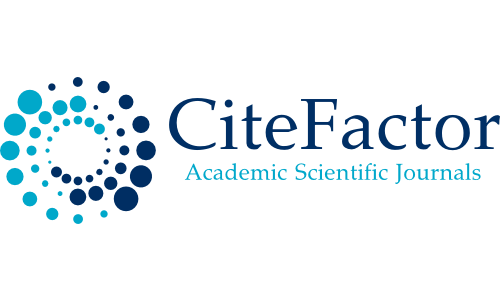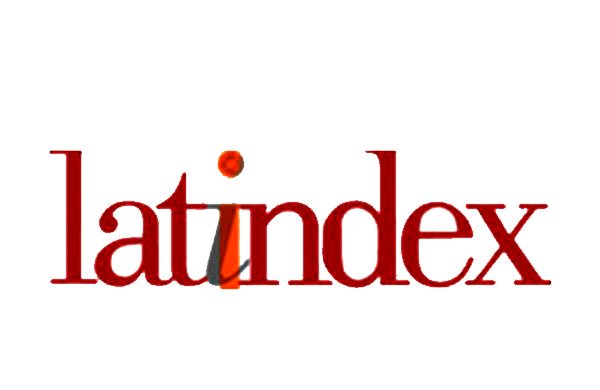Suplementação de ferro lipossomal em mulheres na idade reprodutiva: análise de parâmetros bioquímicos e sintomas
Liposomal iron supplementation in women of reproductive age: analysis of biochemical parameters and symptoms
DOI:
https://doi.org/10.17765/2176-9206.2025v18e13385Palavras-chave:
Deficiência de ferro, Ferro, Mulheres, Suplementação nutricionalResumo
O objetivo foi avaliar os efeitos da suplementação de ferro lipossomal em mulheres na idade reprodutiva com foco em parâmetros bioquímicos e sintomas clínicos. Trata-se de um estudo intervencional, realizado em Belo Horizonte (Brasil), no qual 20 mulheres em idade reprodutiva, com ciclo menstrual regular, foram submetidas à suplementação diária de 30mg de ferro lipossomal durante 60 dias. Foram avaliados sintomas clínicos, ingestão alimentar e exames laboratoriais (saturação de transferrina, ferritina, hemoglobina e proteína C reativa) no início e ao final do estudo. A suplementação de ferro lipossomal promoveu aumento da hemoglobina (p=0,002) e ferritina (p=0,031), sem efeitos na saturação da transferrina (p=0,541). Dentre os sintomas, houve melhora de fadiga, fraqueza, queda de cabelo, náuseas e constipação. Assim, o presente estudo demonstrou que a suplementação de ferro lipossomal promoveu melhora de marcadores do metabolismo do ferro em mulheres na idade reprodutiva, além de promover melhoras de sintomas clínicos.
Downloads
Referências
1 – World Health Organization. Global nutrition targets 2025: anaemia policy brief (WHO/NMH/NHD/14.4). Genebra, 2014. Disponível em: https://www.who.int/publications/i/item/WHO-NMH-NHD-14.4
2 – Kumar A, Sharma E, Marley A, Samaan MA, Brookes MJ. Iron deficiency anaemia: pathophysiology, assessment, practical management. BMJ Open Gastroenterol. 2022;9(1):e000759. https://doi.org/10.1136/bmjgast-2021-000759
3 – Souza ES, Batista JET, Lyrio AO, Guedes EM, Figueiredo ACMG, Cruz SS. Prevalência de anemia em gestantes das Américas: uma revisão rápida com metanálise. Saud Pesq. 2023;16(2):e-11176. https://doi.org/10.17765/2176-9206.2023v16n2.e11484
4 – Knowles J, Walters T, Yarparvar A, Brown R. A review of anemia prevalence, and prevention and control strategies, in the Eastern Europe and Central Asia Region. Curr Dev Nutr. 2024;8(12):104477. https://doi.org/10.1016/j.cdnut.2024.104477
5 – Pasricha SR, Tye-Din J, Muckenthaler MU, Swinkels DW. Iron deficiency. Lancet. 2021;397(10270):233-248. https://doi.org/10.1016/S0140-6736(20)32594-0
6 – Zimmermann MB, Hurrell RF. Nutritional iron deficiency. Lancet. 2007;370(9586):511-520. https://doi.org/10.1016/S0140-6736(07)61235-5
7 – Machado IE, Malta DC, Bacal NS, Rosenfeld LGM. Prevalence of anemia in Brazilian adults and elderly. Rev Bras Epidemiol. 2019;22(suppl.2):e190008.supl.2. https://doi.org/10.1590/1980-549720190008.supl.2
8 – Andre HP, Sperandio N, Siqueira RL, Franceschini SCC, Priore SE. Food and nutrition insecurity indicators associated with iron deficiency anemia in Brazilian children: a systematic review. Ciênc Saúde Colet. 2018;23(4):1159-1167. https://doi.org/10.1590/1413-81232018234.16012016
9 – Chouraqui JP. Dietary approaches to iron deficiency prevention in childhood – A critical public health issue. Nutrients. 2022;14(8):1604. https://doi.org/10.3390/nu14081604
10 – Man Y, Xu T, Adhikari B, Zhou, C, Wang Y, Wang B. Iron supplementation and iron-fortified foods: a review. Crit Rev Food Sci Nutr. 2022;62(16):4504-4525. https://doi.org/10.1080/10408398.2021.1876623
11 – Name JJ, Vasconcelos AR, Maluf MCVR. Iron bisglycinate chelate and polymaltose iron for the treatment of iron deficiency anemia: a pilot randomized trial. Curr Pediatr Rev. 2018;14(4):261-268. https://doi.org/10.2174/1573396314666181002170040
12 – Antunes CVA, Nascimento CRA, Ribeiro TCR, Antunes PA, Chebli LA, Fava LMG et al. Treatment of iron deficiency anemia with lipossomal iron in inflammatory bowel disease: efficacy and impact on quality of life. Int J Clin Pharm. 2020;42(3):895-902. https://doi.org/10.1007/s11096-020-01044-x
13 – Maladkar M , Sankar S, Yadav A. A novel approach for iron deficiency anaemia with liposomal iron: concept to clinic. J Biosc Med. 2020;8(9):27-41. https://doi.org/10.4236/jbm.2020.89003
14 – Tan C, Karaca AC, Assadpour E, Jafari SM. Influence of different nano/micro-carriers on the bioavailability of iron: Focus on in vitro-in vivo studies. Adv Colloid Interface Sci. 2023;318:102949. https://doi.org/10.1016/j.cis.2023.102949
15 – Parisi F, Berti C, Mando C, Martinelli A, Mazzali C, Cetin I. Effects of different regimens of iron prophylaxis on maternal iron status and pregnancy outcome: a randomized control trial. J Matern Fetal Neonatal Med. 2017;30(15):1787-1792. https://doi.org/10.1080/14767058.2016.1224841
16 – Vitale SG, Fiore M, Rosa VLL, Rapisarda AMC, Mazza G, Paratore M et al. Liposomal ferric pyrophosphate and ascorbic acid supplementation in pregnant women with iron deficiency anaemia: haematochemical, obstetric, neonatal and psychological outcomes in a prospective observational study. Int J Food Sci Nutr. 2022;73(2):221-229. https://doi.org/10.1080/09637486.2021.1950129
17 – Bastida G, Guise CH, Algaba A, Nieto YB, Soares JM, Robles V et al. Sucrosominal iron supplementation for the treatment of iron deficiency anemia in inflammatory bowel disease patients refractory to oral iron treatment. Nutrients. 2021;13(6):1770. https://doi.org/10.3390/nu13061770
18 – Low MSY, Speedy J, Styles CE, De-Regil LM, Pasricha SR. Daily iron supplementation for improving anaemia, iron status and health in menstruating women. Cochrane Database Syst Rev. 2016;4(4):CD009747. https://doi.org/10.1002/14651858.CD009747.pub2
19 – Cançado RD, Leite LAC, Muñoz M. Defining global thresholds for sérum ferritin: a challenging mission in establishing the iron deficiency diagnosis in this era of striving for healthy equity. Diagnostics (Basel). 2025;15(3):289. https://doi.org/10.3390/diagnostics15030289
20 – Mahroum N, Alghory A, Kiyak Z, Alwani A, Seida R, Alrais M et al. Ferritin – from iron, through inflammation and autoimmunity, to COVID-19. J Autoimmun. 2022;126:102778. https://doi.org/10.1016/j.jaut.2021.102778
21 – Stoffel NU, von Siebenthal HK, Moretti D, Zimmermann MB. Oral iron supplementation in iron-deficient women: how much and how often? Mol Aspects Med. 2020;75:100865. https://doi.org/10.1016/j.mam.2020.100865
22 – Mujica-Coopman MF, Borja A, Pizarro F, Olivares M. Effect of daily supplementation with iron and zinc on iron status of childbearing age women. Biol Trace Elem Res. 2015;165(1):10-17. https://doi.org/10.1007/s12011-014-0226-y
23 – Abbati G, Incerti F, Boarini C, Pileri F, Bocchi D, Ventura P et al. Safety and efficacy of sucrosomial iron in inflammatory bowel disease patients with iron deficiency anemia. Intern Emerg Med. 2019;14(3):423-431. https://doi.org/10.1007/s11739-018-1993-9
24 – World Health Organization. Physical status: the use and interpretation of anthropometry. Genebra, 1995. 452p. (Technical Report Series No. 854). Disponível em: https://apps.who.int/iris/handle/10665/37003
25 – Fisberg RM, Marchioni DML, Colucci ACA. Avaliação do consumo alimentar e da ingestão de nutrientes na prática clínica. Arq Bras Endocrinol Metab. 2009;53(5):617-624. https://doi.org/10.1590/S0004-27302009000500014
26 – Bailey RL. Overview of dietary assessment methods for measuring intakes of foods, beverages, and dietary supplements in research studies. Curr Opin Biotechnol. 2021;70:91-96. https://doi.org/10.1016/j.copbio.2021.02.007
27 – Biniwale P, Pal B, Sundari T, Mandrupkar G, Datar N, Khurana AS et al. Liposomal iron for iron deficiency anemia in women of reproductive age: review of current evidence. Open J Obstet Gynecol. 2018;8(1):993-1005. https://doi.org/10.4236/ojog.2018.811100
28 – Baomiao D, Xiangzhou Y, Li L, Hualin Y. Evaluation of iron transport from ferrous glycinate liposomes using Caco-2 cell model. Afri Health Sci. 2017;17(3):933-941. https://dx.doi.org/10.4314/ahs.v17i3.37
29 – Tinsley GM, Harty PS, Stratton MT, Siedler MR, Rodriguez C. Liposomal mineral absorption: a randomized crossover trial. Nutrients. 2022;14(16):3321. https://doi.org/10.3390/nu14163321
30 – Trivedi S, Shah S, Patel R. Review on novel oral iron formulations with enhanced bioavailability for the treatment of iron deficiency. J Drug Deliv Sci Tech. 2023;90:105181. https://doi.org/10.1016/j.jddst.2023.105181
31 – Kaur T, Upadhyay J, Nandave M, Alsayari A, Alshehri SA, Pukale S et al. Exploring progress in iron supplement formulation approaches for treating iron deficiency anemia through bibliometric and thematic analysis. Heliyon. 2024;10(7):e29058. https://doi.org/10.1016/j.heliyon.2024.e29058
32 – Conselho Federal de Nutrição. Resolução CFN no 656 de 15 de junho de 2020. Disponível em: https://www.cfn.org.br/wp-content/uploads/resolucoes/resolucoes_old/Res_656_2020.html
33 – Okam MM, Koch TA, Tran MH. Iron supplementation, response in iron-deficiency anemia: analysis of five trials. Am J Med. 2017;130(8):991.e1-991.e8. https://doi.org/10.1016/j.amjmed.2017.03.045
34 – Blanco-Rojo R, Perez-Granados AM, Toxqui L, Gonzalez-Vizcayno C, Delgado MA, Vaquero MP. Efficacy of a microencapsulated iron pyrophosphate-fortified fruit juice: a randomized, double-blind, placebo-controlled study in Spanish iron-deficient women. Br J Nutr. 2011;105(11):1652-1659. https://doi.org/10.1017/S0007114510005490
35 – Plesea-Condratovici A, Plesea-Condratovici C, Rosoga N, Nedelcu N. Efficacy and tolerability of a novel food supplement (Turbofer?) containing microencapsulated iron in liposomal form, in female iron deficiency anaemia. Progr Nutr. 2015;17(3):214-219. Disponível em: https://www.mattioli1885journals.com/index.php/progressinnutrition/article/view/4869
36 – Hussain U, Zia K, Iqbal R, Saeed M, Ashraf N. Efficacy of a novel food supplement (Ferfer?) containing microencapsulated iron in liposomal form in female iron deficiency anemia. Cureus. 2019;11(5):e4603. https://doi.org/10.7759/cureus.4603
37 – Rocha EMB, Lopes AF, Pereira SM, Leone C, Abreu LC, Vieira PD et al. Iron deficiency anemia and its relationship with socioeconomic vulnerability. Rev Paul Pediatr. 2020;38:e2019031. https://doi.org/10.1590/1984-0462/2020/38/2019031
Downloads
Publicado
Como Citar
Edição
Seção
Licença
Copyright (c) 2025 Saúde e Pesquisa

Este trabalho está licenciado sob uma licença Creative Commons Attribution 4.0 International License. A submissão de originais para a revista Saúde e Pesquisa implica na transferência da Carta Concessão de Direitos Autorais, pelos autores, dos direitos de publicação digital para a revista após serem informados do aceite de publicação.
A Secretaria Editorial irá fornecer da um modelo de Carta de Concessão de Direitos Autorais, indicando o cumprimento integral de princípios éticos e legislação específica. Os direitos autorais dos artigos publicados nesta revista são de direito do autor, com direitos da revista sobre a primeira publicação. Os autores somente poderão utilizar os mesmos resultados em outras publicações, indicando claramente a revista Saúde e Pesquisa como o meio da publicação original. Em virtude de tratar-se de um periódico de acesso aberto, é permitido o uso gratuito dos artigos, principalmente em aplicações educacionais e científicas, desde que citada a fonte. A Saúde e Pesquisa adota a licença Creative Commons Attribution 4.0 International.
A revista se reserva o direito de efetuar, nos originais, alterações de ordem normativa, ortográfica e gramatical, com vistas a manter o padrão culto da língua e a credibilidade do veículo. Respeitará, no entanto, o estilo de escrever dos autores. Alterações, correções ou sugestões de ordem conceitual serão encaminhadas aos autores, quando necessário. Nesses casos, os artigos, depois de adequados, deverão ser submetidos a nova apreciação. As opiniões emitidas pelos autores dos artigos são de sua exclusiva responsabilidade.


















